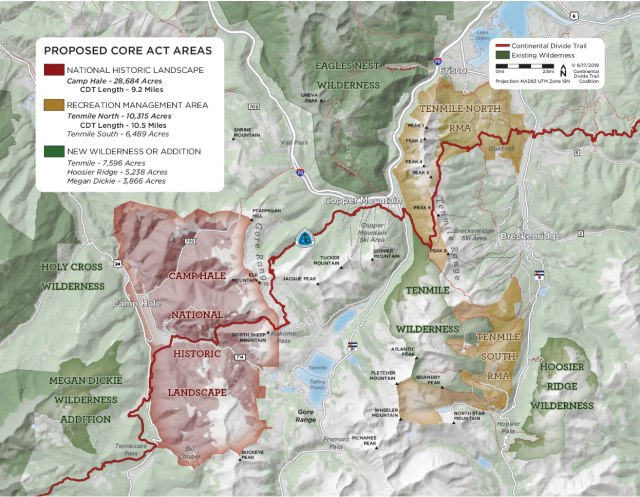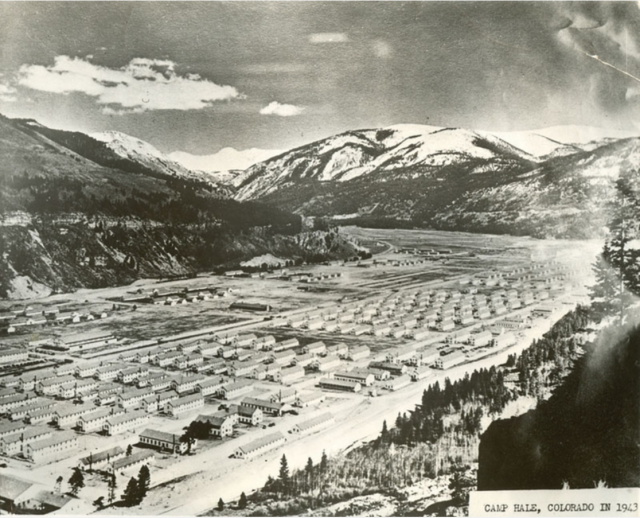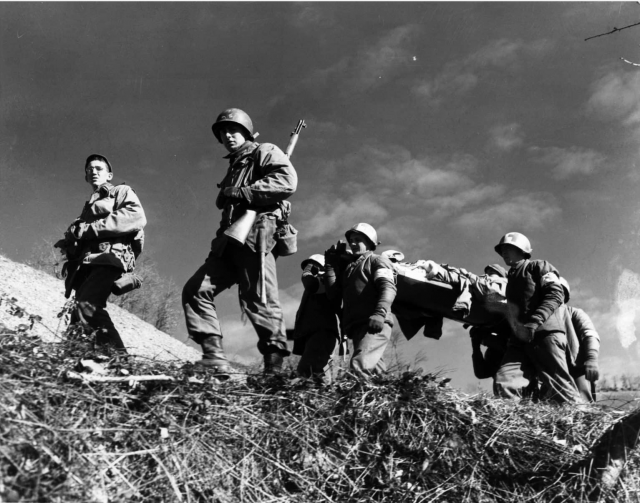
In a ceremony held last week in Colorado’s high country, President Biden proclaimed The Camp Hale – Continental Divide National Monument, the first National Monument designated during his presidency. The ceremony was conducted on the former grounds of Camp Hale deep in the Pando Valley between Leadville and Vail. Camp Hale was the training site of the famous 10th Mountain Division—the “skiing soldiers”—who played a critical role in the Italian theater of World War II. After the war, members of the 10th went on to form the core group of instructors, coaches, and entrepreneurs who established skiing in the United States.
In declaring 53,800 acres of Colorado’s Tenmile Range a National Monument, President Biden stated:
“The rugged landscape serves as a living testament to a pivotal moment in America’s military history, as these peaks and valleys forged the elite soldiers of the famed 10th Mountain Division – the Army’s first and only mountain infantry division – which helped free Europe from the grip of Nazi control in World War II.”
Since its ratification in 1906, the Antiquities Act has allowed presidents “to proclaim national monuments on federal lands that contain historic landmarks, historic and prehistoric structures, or other objects of historic or scientific interest.” There have been 130 National Monuments designated since President Theodore Roosevelt signed the Antiquities Act into law, but never has the object of historic interest been so closely tied to the history of skiing and the ski community. President Biden’s designation of Camp Hale as a National Monument formally recognizes a generation of skiers whose legacy is felt in the ski organizations, resorts, and clubs they helped found.

The roster of 10th Mountain Division veterans includes many who profoundly influenced the modern skiing and outdoor industry: Aspen Ski Club founders Friedl Pfeiffer and John Litchfield; Vail Resort founder, Pete Seibert; Head Ski Company founder, Howard Head; Nike founder, Bill Bowerman. In the cross country ski world, there are many 10th Mountain Division veterans whose legacies within the sport are evident, and whose names will be familiar: Chummy Broomhall, 1948 and 1952 Olympian, designer of 1960 and 1980 Olympic courses, tireless booster of skiing in Maine, and namesake of the Maine State Collegiate Championship; the Von Trapp brothers, founders of the Trapp Family Lodge that established Vermont as a cross-country ski destination; Tony Wise, founder of the American Birkiebeiner, Telemark Lodge, the Worldloppet, and a key figure in the founding of the World Cup; Leif Odmark, “Mr. Sun Valley,” who coached the US Olympic team and influenced such cross country notables as John Caldwell, Si Dunklee, John Burton, and George Hovland.
10th Mountain Division in World War II

With Hitler’s invasion of Poland in September of 1939, Americans began realizing the potential for the US to be drawn into war. Having predicted that battles were likely to be waged in Europe’s high mountains, National Ski Patrol founder, Minnie Dole, proposed the creation of a ski force within the US military. Based on his assertion that, “It is easier to train a skier to be a soldier than a soldier to be a skier,” Dole proposed recruiting heavily from the populations of eastern collegiate skiers and midwestern Scandinavian immigrants. By the summer of 1942, the 10th Mountain Division had been established, including 300 expert skiers from across the United States. Those experienced skiers formed the Mountain Training Group which was responsible for teaching the rest of the Division—some 16,000 soldiers—how to ski.
The last American Division sent to Europe during World War II, the 10th deployed to Italy in December of 1944. The Allied campaign in Italy had stalled on the southern slopes of the Apennine Mountains where the German “Gothic Line” held strong from San Marino to Mt. Belvedere near Pisa. If the Allies could break the German’s defensive positions on Mt. Belvedere, 30 miles north of Pisa, they could push through the Po Valley and push the German divisions back to the Alps. A daring strategy was devised by Lt. Gen George Price Hays who proposed launching an attack across terrain on Riva Ridge that the Germans would deem untraversable. On Feb 18, 1945—in the dead of night—the 10th mounted an assault up five different routes on the sheer rock face. The skill and courage of 10th Mountain Division soldiers allowed the audacious attack to succeed. Mt. Belvedere and the Apennines were taken; German forces fell back. In April of 1945, the German Army in Italy surrendered, followed only two weeks later by the end of the war in Europe.
The 10th Mountain Division’s success came at a high cost: 992 men were killed in action, with another 3,800 wounded during just four months of fighting. Among those lost was the greatest American ski jumper of that generation, Torger Tokle, who was struck by a German artillery shell at the base of Riva Ridge, and for whom the memorial given by fellow 10th Mountain Division soldier, Lyle Munson, serves as an epigram for those lost: “[He] died in much the same fashion he lived, engaged in action up to the hilt.”
For many years following the war, members of the 10th Mountain Division remained “engaged in action,” and the ingenuity and vitality of the American ski industry is what our nation has to show for their efforts. That their base in Colorado’s mountains is now a National Monument is part of the way that Americans—and American skiers—may continue to thank them for their service.

Ben Theyerl
Ben Theyerl was born into a family now three-generations into nordic ski racing in the US. He grew up skiing for Chippewa Valley Nordic in his native Eau Claire, Wisconsin, before spending four years racing for Colby College in Maine. He currently mixes writing and skiing while based out of Crested Butte, CO, where he coaches the best group of high schoolers one could hope to find.



